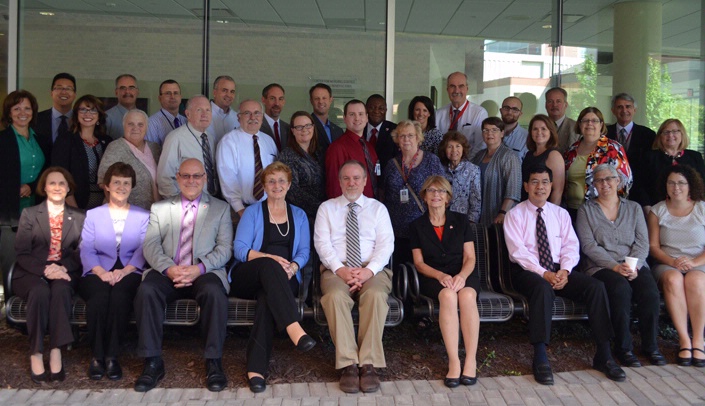Think back to when you first learned to drive.
Demonstrating competence as a driver — and earning the car keys — was about more than just accelerating and braking smoothly, or turning left at an intersection. It went beyond passing a driver’s ed class or exam. Competence was about doing key tasks consistently whether on the interstate or in bad weather.
There are parallels in assessing the competence of future health professionals.
Competency-based education was among the topics discussed at last week’s Education Council Strategic Planning Retreat, where talk also revolved around assessment, interprofessional education and the iEXCEL℠ initiative.
“A competency is an observable ability,” said Kelly Caverzagie, M.D., associate dean for educational strategy.
Collectively, competencies help to define the key components of a profession. Assessing them individually or in isolation, however, does not necessarily equate to the demonstration of competence.
For example, the ability to brake smoothly and turn left at an intersection are critical competencies in safely driving a car. However, a teenager who demonstrates these skills in isolation will not prompt his father to hand over the keys to the car. Rather, the teen must demonstrate the achievement of multiple competencies on multiple occasions and within the context of the moment in order to be trusted with the car.
In health professions education, this analogy is taking shape as learners are increasingly being required to apply these observable abilities (i.e. competencies) to patient care in order to achieve optimal results (i.e. to demonstrate competence). Worldwide, efforts are focused on redesigning curriculum, assessments and faculty development in order to accomplish this goal.
“On the surface it seems easy, but in reality it requires us to think about things differently,” Dr. Caverzagie said.
It’s a subject gaining national attention as more schools explore a competency-based model, which is:
- learner-centered;
- based on pre-defined knowledge, skills and attitudes;
- focused on learner abilities, not capabilities; and
- is outcomes-driven meaning it is both measurable and improvable.
A framework developed by Dr. Caverzagie helps faculty “see” competence by defining, and then evaluating students on their demonstration of pre-defined competencies. In the retreat, he proposed using this framework to think about how UNMC could assess interprofessional practice and interprofessional care.

Educational innovation is a critical component of serving the needs of Nebraska and the region. This group is to be commended for pushing forward with novel ways of maximizing the educational experience. Students will come to the actual patient better informed and more capable. Coupled with real world experiences that can only be gained in the clinics, wards and operating room this approach will hopefully add value and decrease the time spent by students that can move through the competencies at a more rapid pace.